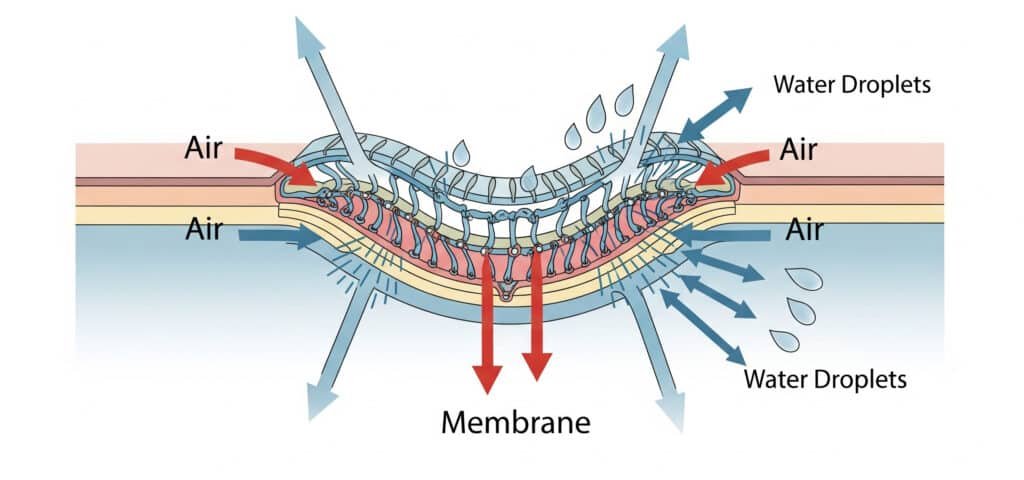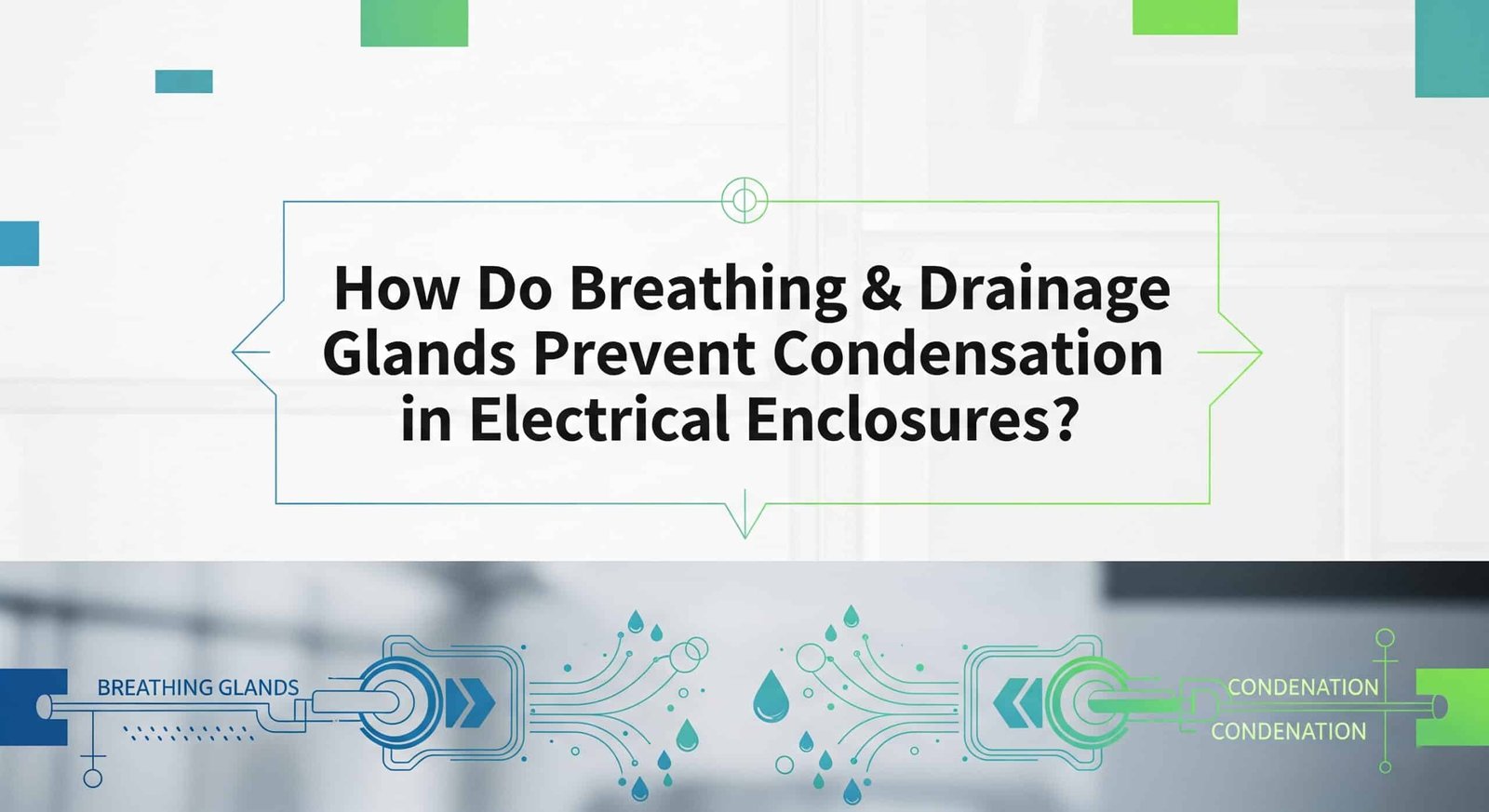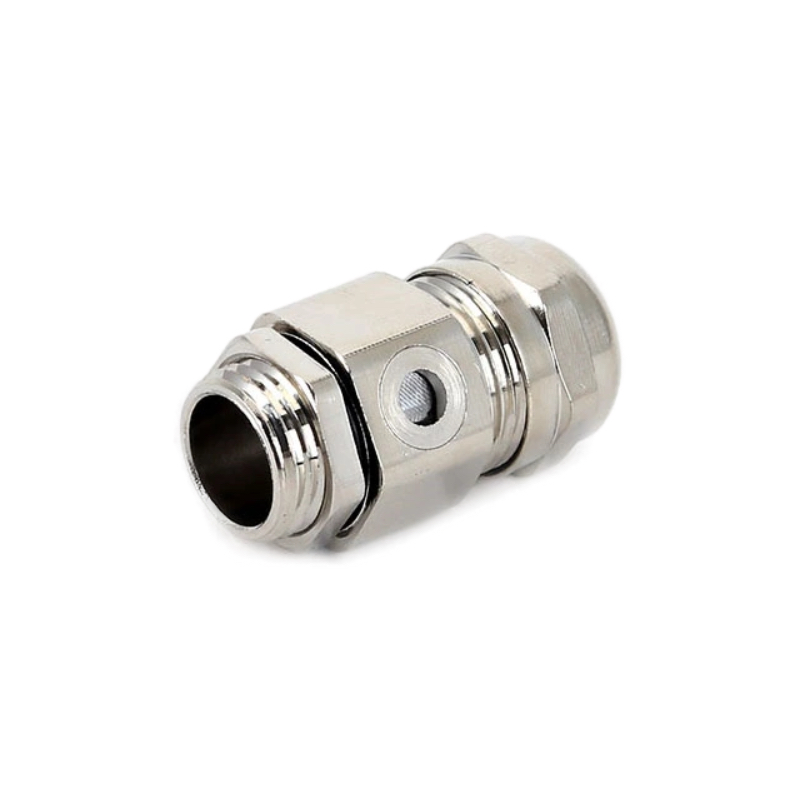Condensation1 in electrical enclosures can destroy expensive equipment and create safety hazards. Temperature changes cause moisture buildup that leads to corrosion, short circuits, and system failures.
Breathing and drainage glands provide controlled ventilation while maintaining IP protection, allowing air exchange to prevent condensation without compromising waterproof sealing – the perfect solution for outdoor and industrial applications.
I’ve seen too many cases where customers called me after their control panels failed due to moisture damage. One client in Germany lost €50,000 worth of equipment because they didn’t install proper breathing solutions. Let me share what I’ve learned about preventing these costly mistakes 😉
Table of Contents
- What Are Breathing & Drainage Glands and How Do They Work?
- Why Do Electrical Enclosures Need Breathing Solutions?
- Which Types of Breathing Glands Should You Choose?
- How Do You Install Breathing Glands Correctly?
What Are Breathing & Drainage Glands and How Do They Work?
Ever wondered how a sealed enclosure can “breathe” without letting water in?
Breathing glands use specialized membranes that allow air to pass through while blocking water droplets, creating pressure equalization that prevents condensation buildup in sealed electrical enclosures.

The Science Behind Breathing Technology
Breathing glands work on a simple but effective principle: selective permeability2. The key components include:
- PTFE Membrane3: Microporous material with holes smaller than water droplets but larger than air molecules
- Protective Housing: Usually made from nylon or stainless steel for durability
- Drainage Channel: Allows condensed water to exit the enclosure
Types of Breathing Solutions We Manufacture
| Product Type | Material | IP Rating | Applications |
|---|---|---|---|
| Breathable Vent Plug | Nylon/PTFE | IP68 | Control panels, junction boxes |
| Drainage Gland | Brass/Steel | IP65-IP68 | Outdoor enclosures, marine equipment |
| Combined Vent | Composite | IP67 | Automotive, industrial automation |
I remember David, a procurement manager from a UK automation company, was skeptical about these “magic” plugs. He said, “Chuck, how can something be waterproof and breathable at the same time?” After I sent him technical drawings and membrane specifications, he ordered 500 units. Six months later, zero condensation issues!
Why Do Electrical Enclosures Need Breathing Solutions?
Think your sealed enclosure is protecting your equipment? Think again.
Temperature fluctuations create pressure differences4 that either draw moisture into enclosures or trap existing humidity inside, leading to condensation that causes corrosion, short circuits, and equipment failure.
The Hidden Dangers of “Sealed” Enclosures
Here’s what happens in a typical outdoor electrical cabinet:
- Daytime Heating: Sun heats the enclosure, air expands, pressure increases
- Nighttime Cooling: Temperature drops, air contracts, creating vacuum
- Moisture Infiltration: Vacuum draws humid air through cable entries and gasket imperfections
- Condensation Formation: Trapped moisture condenses on cold surfaces
Real-World Consequences I’ve Witnessed
Case Study – Hassan’s Refinery Problem:
A chemical plant owner in Saudi Arabia contacted us after losing three control systems in one year. The desert climate created extreme temperature swings – 50°C during day, 20°C at night. Without breathing glands, his IP65-rated panels were acting like moisture traps. We installed our stainless steel breathing vents, and he hasn’t had a single failure since.
Cost of Ignoring Breathing Solutions
| Problem | Typical Cost | Prevention Cost |
|---|---|---|
| Control system replacement | $10,000-$50,000 | $50-$200 |
| Production downtime | $5,000/hour | Minimal |
| Emergency repairs | $2,000-$10,000 | Preventive |
Which Types of Breathing Glands Should You Choose?
Not all breathing glands are created equal – choosing wrong can be worse than not using any.
Select breathing glands based on your enclosure size, environmental conditions, and required IP rating – larger enclosures need higher airflow capacity while harsh environments require more robust materials and higher IP protection.
Our Product Selection Matrix
For Standard Applications (Indoor/Mild Outdoor)
- Nylon Breathable Vent Plugs: Cost-effective, IP68 rated
- Airflow Rate: 1-10 L/min depending on size
- Temperature Range: -40°C to +100°C
For Harsh Environments (Marine/Chemical)
- Stainless Steel Breathing Glands: Corrosion resistant, ATEX certified5
- Enhanced Sealing: Double O-ring design
- Chemical Compatibility: Resistant to acids, alkalis, solvents
For High-Volume Applications
- Large Diameter Vents: M20, M25, M32 threads
- Multiple Installation: Calculate 1 vent per 10L enclosure volume
- Drainage Integration: Combined breathing and drainage function
Technical Specifications Comparison
| Feature | Standard Vent | Heavy Duty | Marine Grade |
|---|---|---|---|
| Material | Nylon PA66 | Brass/Steel | 316L Stainless |
| IP Rating | IP68 | IP68 | IP68 |
| Airflow | 5 L/min | 15 L/min | 20 L/min |
| Certifications | CE, RoHS | CE, ATEX | CE, DNV-GL |
| Price Range | $15-25 | $35-50 | $60-100 |
David from the UK told me: “Chuck, your technical data sheets are more detailed than some of our internal specifications. That’s exactly what we need for our quality audits.”
How Do You Install Breathing Glands Correctly?
Installation mistakes can turn your breathing solution into a water entry point.
Install breathing glands at the highest point of the enclosure with proper thread sealing and orientation to ensure effective air exchange while preventing water ingress through gravity and proper drainage.
Step-by-Step Installation Guide
Pre-Installation Checklist
- Calculate Required Capacity: 1 vent per 10-15L enclosure volume
- Select Mounting Location: Top or upper side walls only
- Check Thread Compatibility: M12, M16, M20 standard sizes
- Prepare Sealing Materials: Thread sealant or O-rings
Installation Process
- Drill Precise Hole: Use step drill bit for clean threads
- Apply Thread Sealant: Use appropriate compound for your environment
- Hand Tighten First: Avoid over-torquing plastic components
- Final Torque: Follow our specification sheets (typically 15-25 Nm)
- Test Installation: Pressure test if required by application
Common Installation Mistakes to Avoid
| Mistake | Consequence | Solution |
|---|---|---|
| Bottom mounting | Water accumulation | Always mount on top |
| Over-tightening | Cracked housing | Use torque wrench |
| Wrong sealant | Chemical degradation | Check compatibility |
| Insufficient capacity | Poor ventilation | Calculate airflow needs |
Maintenance Requirements
Good news: Our breathing glands are virtually maintenance-free! The PTFE membrane is self-cleaning and doesn’t require replacement under normal conditions. However, in extremely dusty environments, annual visual inspection is recommended.
Hassan from the refinery asked me: “Chuck, do these things need constant maintenance like our other equipment?” I told him: “Install them right, and forget about them. That’s the beauty of good engineering.”
Conclusion
Breathing glands are essential insurance against condensation damage – a small investment that prevents catastrophic equipment failures and costly downtime.
FAQs About Breathing & Drainage Glands
Q: How long do breathing glands last in outdoor applications?
A: Our PTFE membrane technology provides 10+ years of reliable service in normal outdoor conditions. The membrane doesn’t degrade from UV exposure or temperature cycling, making it ideal for long-term installations.
Q: Can breathing glands maintain IP68 rating while allowing air flow?
A: Yes, our breathing glands maintain full IP68 protection against water ingress while allowing controlled air exchange. The microporous PTFE membrane blocks water molecules while permitting air passage.
Q: What size breathing gland do I need for my enclosure?
A: Calculate 1 vent per 10-15 liters of enclosure volume. For a 100L cabinet, use one M20 vent or two M16 vents. Larger enclosures may require multiple vents for optimal performance.
Q: Are breathing glands suitable for ATEX explosive atmospheres?
A: Yes, we manufacture ATEX-certified breathing glands specifically for hazardous locations. These units feature enhanced sealing and materials approved for explosive atmospheres in Zone 1 and Zone 2 applications.
Q: How do I know if my enclosure needs breathing glands?
A: If your enclosure experiences temperature variations greater than 10°C, is located outdoors, or contains heat-generating equipment, breathing glands are essential for preventing condensation damage.
-
Learn the science behind how condensation forms when temperature drops below the dew point. ↩
-
Explore the scientific principle of selective permeability and how microporous membranes work. ↩
-
Review the technical properties of Polytetrafluoroethylene (PTFE), including its use in microporous membranes. ↩
-
Understand how temperature changes create pressure differences in a fixed volume, as explained by the Ideal Gas Law. ↩
-
Access the official European Commission guidelines on the ATEX directive for equipment used in hazardous locations. ↩



